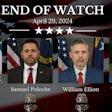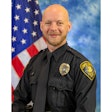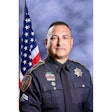It's another hot night in the hood and you see a couple of the regulars hanging out near the local mom and pop liquor store. The radio, for once, isn't barking calls. You decide to take the opportunity and roll up to the kids on the corner. One of the males is holding a paper sack and even in the dim streetlight, you can tell he's sipping an 8-ball.
"How's it going?" you ask.
"Not much, cave boy," comes the response. "We're just chillin'."
Officers might encounter the following slang terms on the street:
8-ball: Old English 800, a popular beer in some neighborhoods.Also, in drug terms, an eighth of an ounce.
Chill: To relax, be mellow
10: A gun
PJs: The projects
Ay, yo trip: A phrase to seek attention like "check this out"
Project gold: Large gold earrings
Pearl: Cocaine
Stat:: Methcathinone
Spider blue: Heroin
Zero: Opium
STP: PCP
Rooties: Rophynol
Jimmy hat/cap: Condom
Cave boy: A white person
Hoodrat: A neighborhood female who is generally promiscuous and not expected to leave the hood
Honey dip: An attractive young lady with a golden complexion
Nappy head: A person who is not fully awake
Smaller airports appeal to smugglers
Small airports naturally appeal to drug smugglers because they may not have any U.S. customs or law enforcement representation at all. Using light, general aviation aircraft, huge amounts of narcotics are smuggled into the country each year. Chances are, your jurisdiction has an airport. Whether a county, municipal, or regional operation, officers should be alert to indicators pointing to possible illicit air operations. According to the Federal Aviation Administration Airman's Informational Manual, here's what to watch for:
- passenger seats removed from the aircraft
- transporting gas cans, or persons without an aircraft buying large amounts of aviation gas in containers
- carrying numerous cardboard boxes, duffel bags, plastic bags, etc.
- maps of Mexico, the Caribbean, Central or South America
- strong odor of perfume or air fresheners which may be used to mask the odor of cocaine or marijuana
- FAA registration numbers which appear to be incomplete, crooked, sloppily applied or otherwise altered
- muddy wheels, beat-up props, and a pitted undercarriage may be evidence that the aircraft has landed on unpaved strips
- vans, panel trucks or campers meeting aircraft at isolated areas of the airport pilots reluctant to discuss their destination or point of origin or hesitant to discuss any of the indicators above
- payment of cash for fuel or displays of large amounts of cash by the pilot or passengers
Naturally, the presence of one or more of these indicators does not necessarily mean your local airport is a haven for drug smugglers. However, coupled with other suspicious behavior, further investigation may be justified.
Victims Report Fewer Crimes
The Department of Justice has reported that violent crimes fell more than percent last year. According to preliminary estimates by the department's Bureau of Justice Statistics (BJS), there were an estimated 9.9 million violent crimes during 1995, compared to about 10.9 million during 1994.
BJS Director Jan Chaiken said the decline in the violent victimization rate began in 1994 and interrupted a rising trend that had existed since the mid1980s, while crimes of theft continued a 20-year pattern of decreasing rates.
BJS estimates there were 39.6 million personal and household crimes of theft and violence during 1995, compared to 42.4 million the year before, which is a 6.6 percent decline.
Last year, rape decreased almost 18 percent, robbery fell 14 percent, aggravated assault declined 19 percent and purse snatching and pocket picking were down 18 percent. Decreases in the number of property crimes such as vehicle theft were also reported.
During 1995, the BJS survey of crime victims asked approximately 100,000 people 12 years old and older in 49,000 households about crimes they might have experienced during the previous six months. Therefore, the BJS survey is able to include both crimes reported to police and those that go unreported.
Graphs and tables are accessible on BJS's Internet web site at https://www.ojp.gov/about/offices/bureau-justice-statistics-bjs. Additional BJS materials may be obtained by calling the BJS Clearinghouse at (800) 732-3277.










